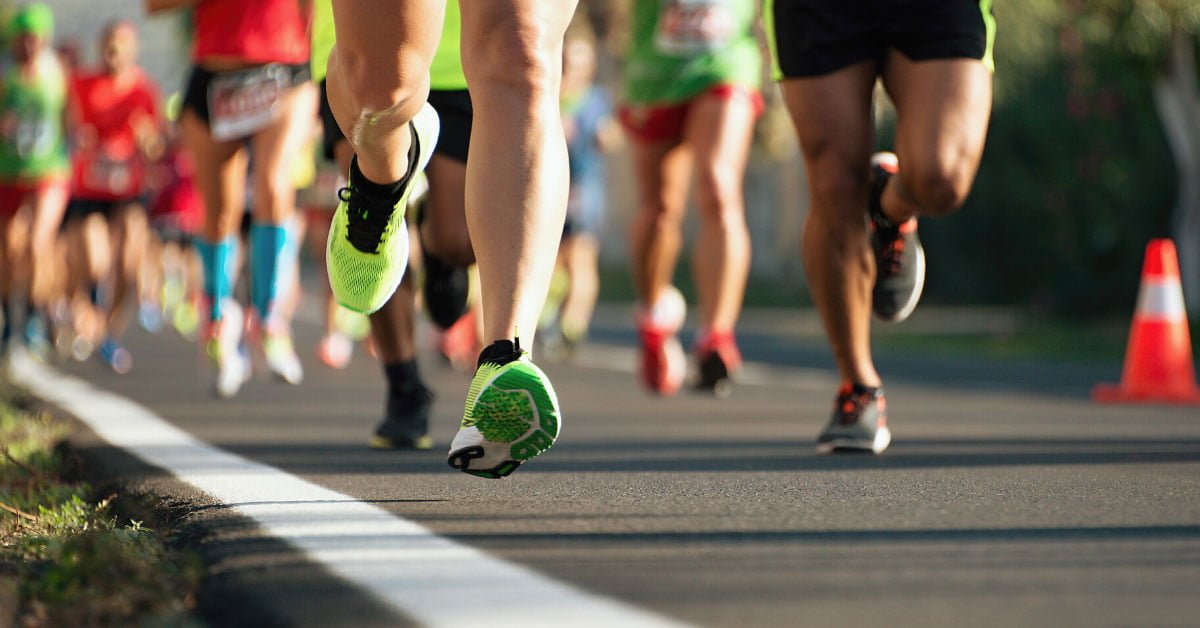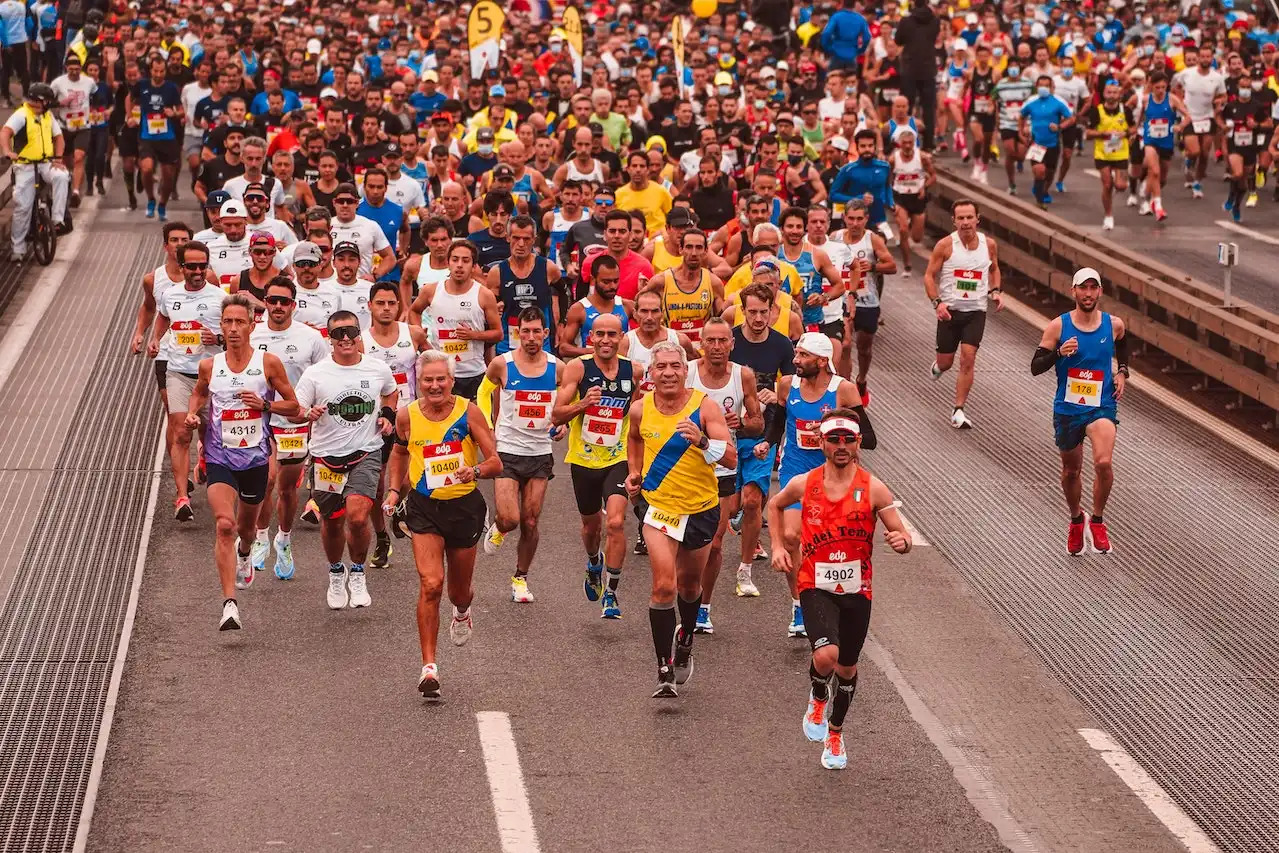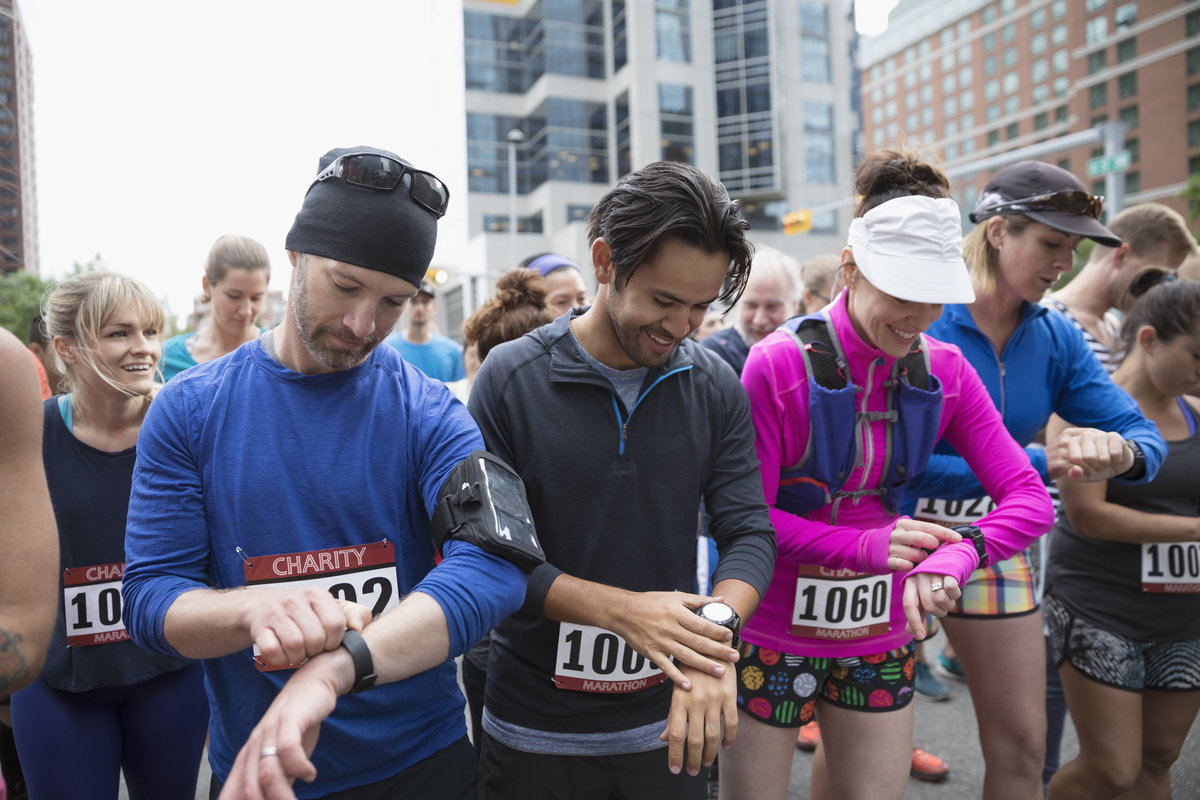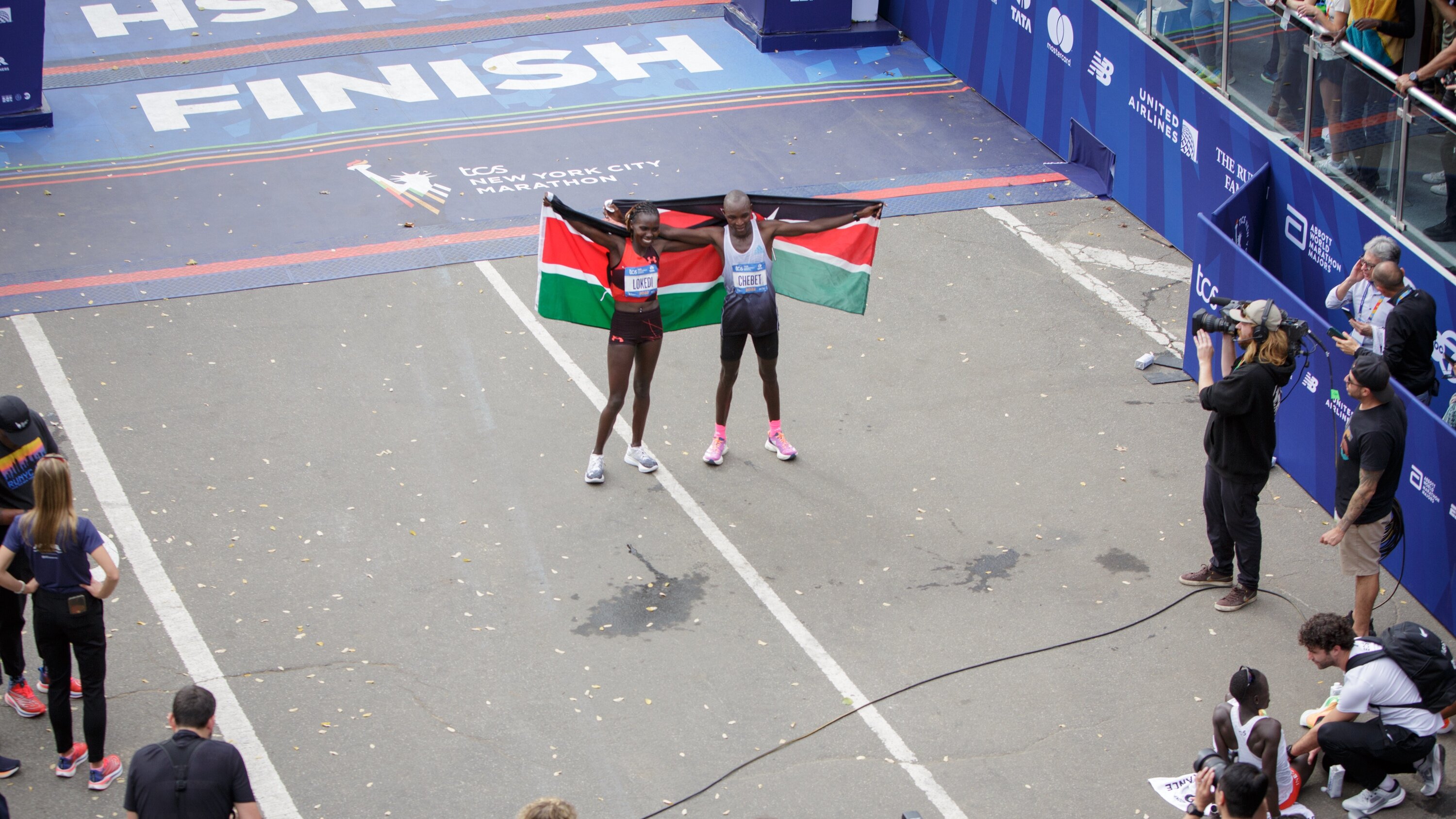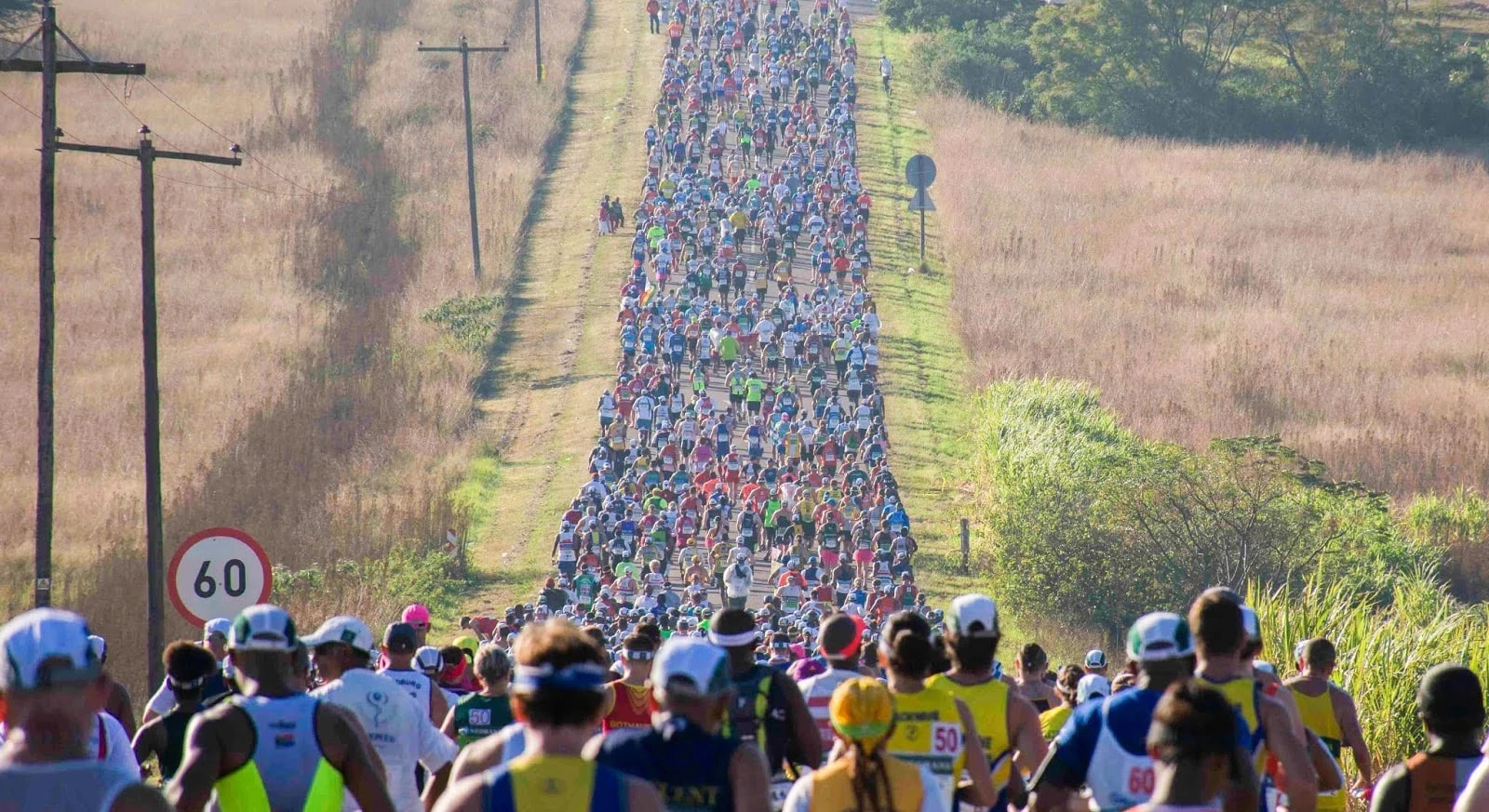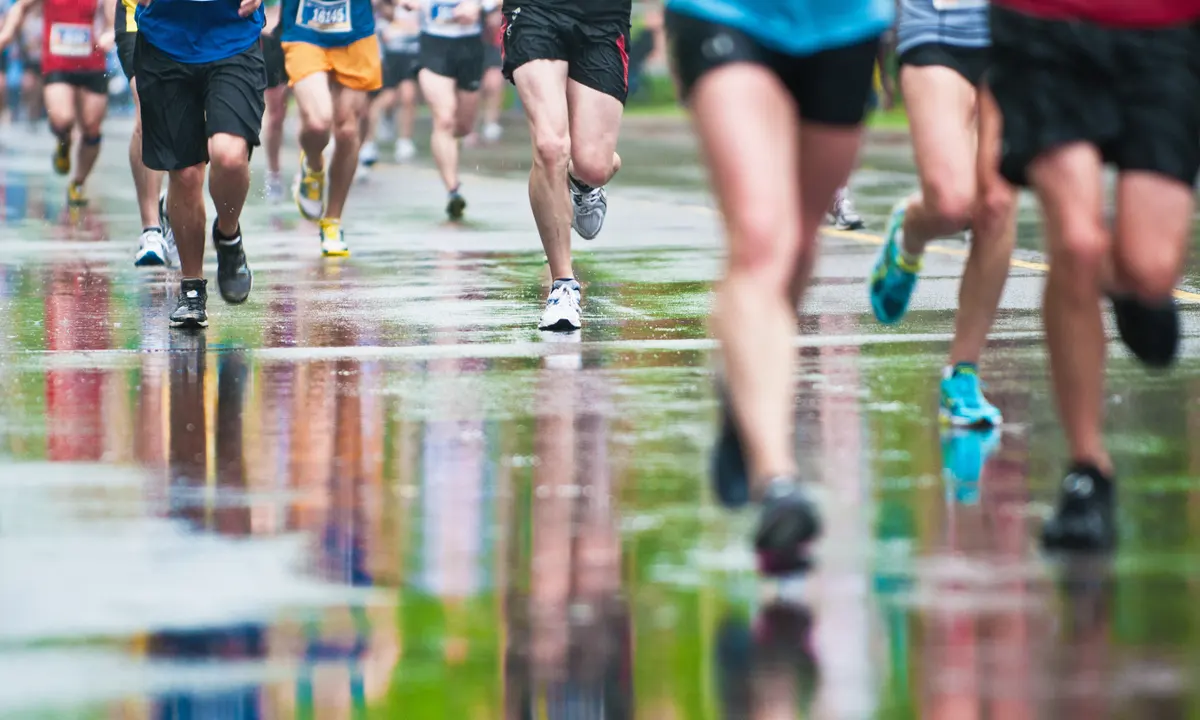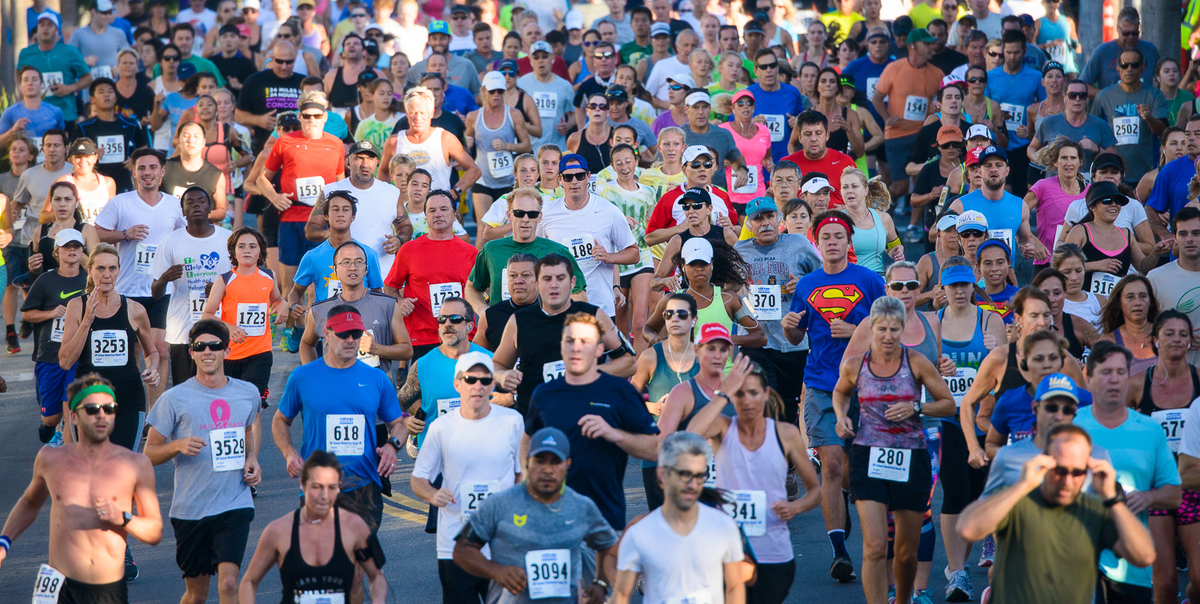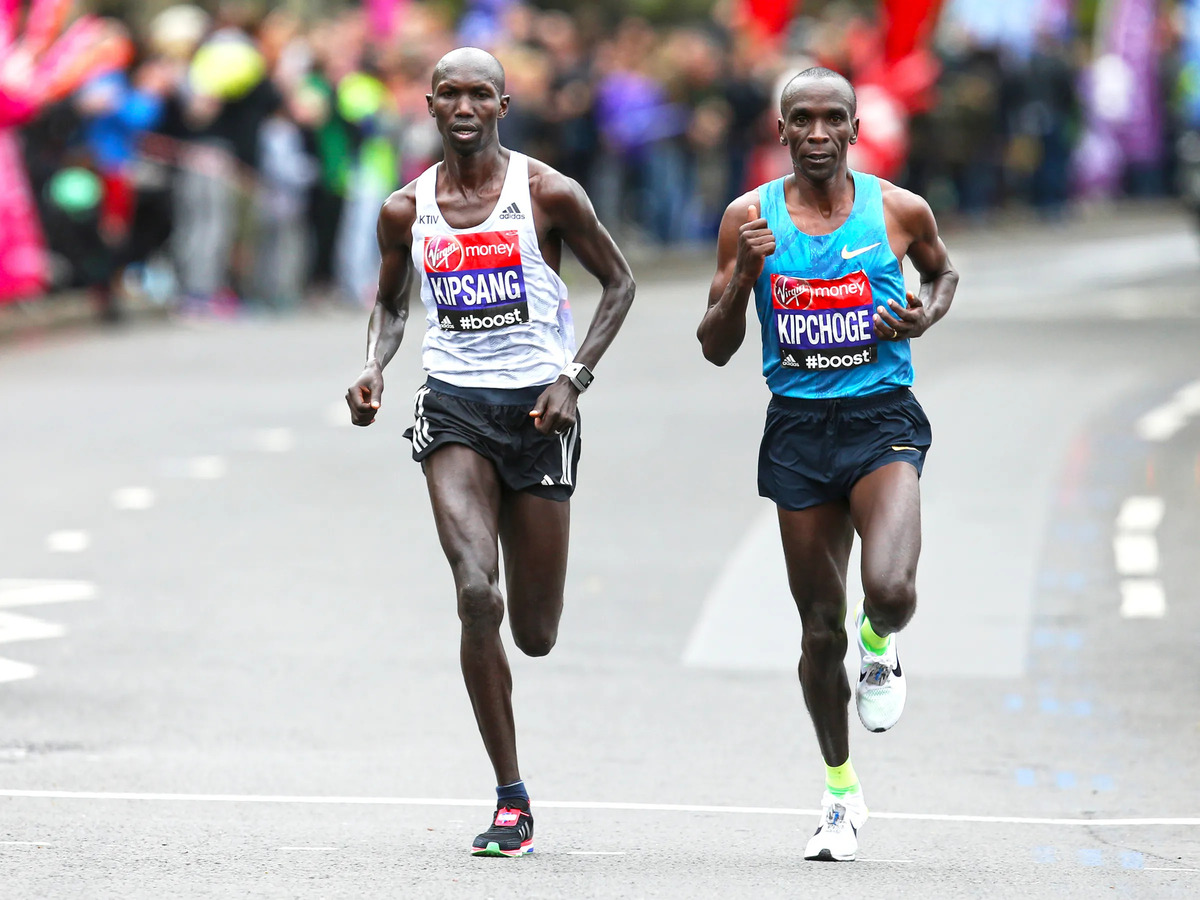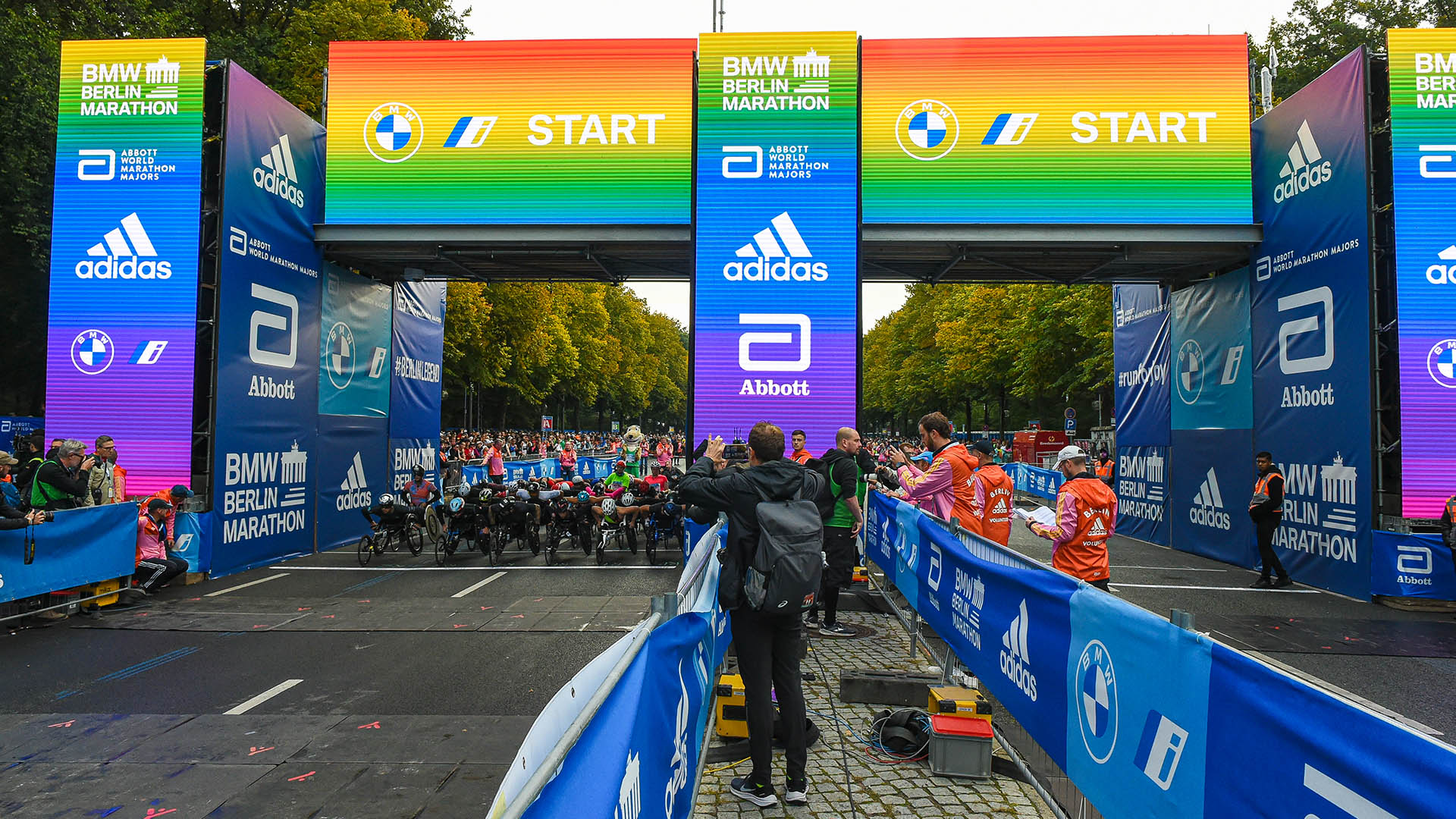

Featured
How Long Is The Berlin Marathon
Modified: January 2, 2024
Discover the length of the Berlin Marathon and how it challenges participants. Read about the featured race that captivates runners worldwide.
Introduction
The Berlin Marathon is one of the most prestigious and iconic marathons in the world. Held annually in Berlin, Germany, it attracts thousands of runners from all over the globe. The event not only showcases the city’s rich history and vibrant culture but also offers a fast and flat course, making it a favorite among both professional and amateur runners.
Whether you are a seasoned marathon runner or someone looking to tackle their first 42.195-kilometer challenge, the Berlin Marathon promises an unforgettable experience. With its captivating atmosphere, stunning scenic routes, and impressive organization, it’s no wonder why this race has gained a reputation as one of the best marathons worldwide.
In this article, we will delve into the history of the Berlin Marathon, explore the course description, discuss the weather conditions runners can expect, and provide valuable tips for marathon preparation. By the end of this article, you will have a comprehensive understanding of what makes the Berlin Marathon so special and how to make the most of your participation in this renowned event.
So whether you’re dreaming of setting a personal record, taking in the sights of Berlin, or simply challenging yourself in the ultimate running test, let’s dive into the fascinating world of the Berlin Marathon.
Overview of the Berlin Marathon
The Berlin Marathon is an annual long-distance race held in the captivating city of Berlin, Germany. It is one of the six World Marathon Majors, along with marathons in Tokyo, Boston, London, Chicago, and New York City. The event, founded in 1974, has grown in popularity and stature, attracting elite runners and dedicated amateurs from around the world.
The marathon begins and ends near the iconic Brandenburg Gate, traversing through the heart of Berlin. The course takes runners on a journey through the city’s historic landmarks and scenic neighborhoods, providing an immersive experience of Berlin’s rich history and vibrant culture.
Renowned for its flat and fast course, the Berlin Marathon has witnessed numerous world records being set. In fact, the event has gained a reputation as one of the fastest marathons globally, making it a sought-after race for those aiming to achieve a personal best time.
Every year, the Berlin Marathon attracts approximately 40,000 runners from over 120 countries, creating a diverse and energetic atmosphere. The event showcases the spirit of unity and camaraderie among participants, encouraging runners of all abilities to challenge themselves and achieve their goals.
The Berlin Marathon is renowned for its exceptional organization and vibrant support from spectators. Along the course, enthusiastic crowds cheer on the runners, providing encouragement and motivation to keep pushing forward. The race also features live music performances and entertainment, adding to the festive atmosphere and creating an unforgettable experience for all participants.
As a participant in the Berlin Marathon, you’ll not only have the opportunity to conquer one of the world’s most prestigious races but also be a part of the city’s vibrant running community. The event serves as a celebration of athleticism, determination, and the indomitable human spirit.
Now that we have an overview of the Berlin Marathon, let’s dive into its fascinating history and discover what makes it such a special event.
The History of the Berlin Marathon
The Berlin Marathon has a rich history that dates back to its inaugural race in 1974. It was established by a group of running enthusiasts and has since grown into one of the most prestigious marathons worldwide.
The idea for the Berlin Marathon was conceived by Horst Milde, a German runner, and current race director. Milde, inspired by the success of the New York City Marathon, wanted to create a similar event in Berlin to showcase the resilience and spirit of the city.
The first Berlin Marathon took place on October 13, 1974, with 286 athletes from a variety of nations competing. The race began at the Grunewald Forest and finished at the Olympic Stadium, with Günter Hallas emerging as the victor, completing the course in 2 hours, 44 minutes, and 53 seconds.
Over the years, the Berlin Marathon gained popularity, attracting more participants and top-tier athletes. It became a stage for showcasing remarkable running performances and achieving record-breaking times.
One significant milestone in the history of the Berlin Marathon occurred in 1981 when Ingrid Kristiansen of Norway set a new women’s world record, finishing in 2 hours, 21 minutes, and 6 seconds. This was the first of several world records that would be set on this fast course.
However, it wasn’t until the 2000 edition of the Berlin Marathon that the event truly made its mark in the record books. On September 30, 2000, the legendary Ethiopian runner, Haile Gebrselassie, shattered the men’s marathon world record, crossing the finish line in a staggering time of 2 hours, 3 minutes, and 59 seconds. This achievement solidified the reputation of the Berlin Marathon as a premier race for record-breaking performances.
Since then, the Berlin Marathon has witnessed numerous world records being set. Notably, in 2003, Paul Tergat of Kenya broke Gebrselassie’s record with a time of 2 hours, 4 minutes, and 55 seconds. The most recent men’s world record was achieved by Eliud Kipchoge of Kenya in 2018, as he completed the race in 2 hours, 1 minute, and 39 seconds, becoming the first person to run a marathon under 2 hours and 2 minutes.
On the women’s side, Paula Radcliffe of Great Britain set the world record at the 2002 Berlin Marathon, finishing in an impressive time of 2 hours, 17 minutes, and 18 seconds. Although her record still stands, the women’s field continues to produce exceptional performances year after year.
Throughout its history, the Berlin Marathon has not only been a platform for record-breaking feats but also a testament to the resilience and triumph of the human spirit. It has become an event that brings together athletes from different backgrounds and cultures, creating a sense of unity and camaraderie among participants.
Now that we have explored the history of the Berlin Marathon, let’s delve into the details of the course and what makes it so appealing for runners seeking to achieve their personal best.
Course Description
The Berlin Marathon offers runners a spectacular course that highlights the beauty and history of the city. The route takes participants through some of Berlin’s most iconic landmarks and scenic neighborhoods, providing a truly memorable experience.
The race begins near the historic Brandenburg Gate, a symbol of unity and triumph. Runners set off on a flat and fast course, which contributes to the marathon’s reputation for record-breaking performances.
From the starting point, the course leads runners through the city center, passing landmarks such as the Reichstag, Berlin Cathedral, and Checkpoint Charlie. As participants continue their journey, they will run along the River Spree and through the famous Tiergarten, a picturesque park known for its greenery and tranquility.
One of the highlights of the course is reaching the halfway point at Potsdamer Platz, a vibrant square filled with shops, restaurants, and entertainment. The energy from the cheering crowds and the lively atmosphere of this iconic location provide a much-needed boost for runners as they approach the second half of the marathon.
As the race progresses, the course takes runners through the eclectic neighborhoods of Kreuzberg and Friedrichshain, where street art and a vibrant cultural scene can be found. The cheers and support from the local community create an uplifting and motivating atmosphere, propelling participants toward the finish line.
The final stretch of the Berlin Marathon brings runners back to the heart of the city. With the breathtaking backdrop of the Brandenburg Gate in sight, the sense of accomplishment and anticipation builds. As participants enter the final meters, the cheering of the crowd reaches a crescendo, providing an incredible sense of achievement as they cross the finish line.
Overall, the Berlin Marathon’s course offers a balance of historic landmarks, picturesque scenery, and a flat terrain that presents an opportunity for participants to achieve their personal best. The unique blend of culture, history, and vibrant support from the spectators creates an unforgettable marathon experience.
Having explored the course description, it’s important to also consider the weather conditions that runners may encounter during the Berlin Marathon. Let’s take a closer look at what participants can expect in terms of weather and how to prepare for it.
Weather Conditions during the Berlin Marathon
The weather conditions during the Berlin Marathon can vary significantly, depending on the time of year. As the race typically takes place in September, participants can expect a mild and temperate climate. However, it is crucial to be prepared for any possible weather scenario on race day.
During the Berlin Marathon, the average temperature ranges from 12°C to 18°C (54°F to 64°F), providing a comfortable environment for running. The early morning start time ensures cooler temperatures in the initial stages of the race, gradually warming up as the day progresses.
While the mild temperatures are generally favorable for running, it is essential to consider other weather elements that may come into play. It’s not uncommon for Berlin to experience rainfall during the month of September, so participants should be prepared with appropriate rain gear.
Additionally, runners should take note of the wind conditions, as Berlin is known for its breezy weather. Wind direction and speed can impact performance, particularly on long stretches of the course where there is minimal shield from buildings or trees.
As with any marathon, it is crucial to stay hydrated throughout the race. Adequate water stations are provided along the course, ensuring participants have access to fluids to maintain hydration levels. Runners should also consider applying sunscreen, as even cloud cover cannot fully protect against harmful UV rays.
When preparing for the Berlin Marathon, it is advisable to check the weather forecast in the days leading up to the race. This will help runners plan and pack accordingly, ensuring they are prepared for any weather conditions they may encounter.
On the day of the marathon, be sure to dress in layers to accommodate potential temperature fluctuations. This will allow you to adjust your clothing as needed during the race. It is also a good idea to have a disposable plastic poncho or garbage bag handy to protect against rain or wind if necessary.
Overall, while the weather conditions during the Berlin Marathon are generally mild and favorable for running, participants should be prepared for possible rain, wind, and temperature fluctuations. By staying informed and making the appropriate preparations, runners can adapt to the weather conditions and ensure an enjoyable and successful marathon experience.
Now that we have discussed the weather conditions, let’s move on to valuable tips for training and running the Berlin Marathon.
Tips for Running the Berlin Marathon
Participating in the Berlin Marathon is an exciting and challenging endeavor. To help you make the most of your race experience, here are some valuable tips to consider during your training and on race day:
- Set realistic goals: Before starting your training, establish clear and attainable goals for the race. Whether it’s achieving a specific time, enjoying the experience, or simply completing the marathon, having a target in mind will guide your preparation.
- Create a training plan: Develop a training plan that gradually increases your mileage and incorporates different types of workouts, such as speed sessions, long runs, and recovery days. Consistency and gradual progression are key to building endurance and preventing injuries.
- Include cross-training: In addition to running, incorporate cross-training activities like swimming, cycling, or strength training to improve overall fitness and prevent overuse injuries.
- Practice on similar terrain: If possible, train on flat terrains to simulate the conditions you’ll encounter during the Berlin Marathon. Familiarizing yourself with running on flat surfaces will help you optimize your race performance.
- Train in various weather conditions: As the weather on race day can vary, training in different weather conditions will prepare you mentally and physically. This includes runs in rain, wind, and different temperatures to adapt to changing weather scenarios.
- Nutrition and hydration: Pay attention to your nutrition and hydration throughout your training and on race day. Practice fueling during longer runs, experiment with different energy gels or snacks, and stay properly hydrated to optimize your performance.
- Get familiar with the course: Study the course map and landmarks to familiarize yourself with the route. This will help you mentally prepare and anticipate particularly challenging sections or key points to look forward to.
- Conservative start: Start the race at a conservative pace and gradually increase your speed as the race progresses. This approach will help you conserve energy for the later stages and reduce the risk of hitting the dreaded “wall.”
- Enjoy the experience: The Berlin Marathon is not just about achieving a personal record; it’s an opportunity to soak in the atmosphere, connect with fellow runners, and embrace the vibrant spirit of the event. Take time to appreciate the iconic landmarks and the incredible support from the crowds.
- Maintain mental focus: Running a marathon can be physically and mentally demanding. Stay positive, focus on your breathing, and break the race down into smaller sections to make it more manageable. Remember to celebrate small victories along the way.
By following these tips, you’ll be well-equipped to tackle the Berlin Marathon and make the most of your race experience. Remember, training and preparation are just as important as the race itself, so enjoy the journey and embrace the challenge ahead.
Now, armed with these tips, you have the tools to embark on your training and make the most of your participation in the Berlin Marathon. Good luck on your journey to conquering the streets of Berlin!
Training for the Berlin Marathon
Training for the Berlin Marathon requires a disciplined approach and careful preparation. By following a well-structured training plan and incorporating key elements into your training regimen, you can optimize your performance and increase your chances of success on race day.
Here are essential factors to consider when training for the Berlin Marathon:
- Build a solid base: Begin your training with a solid foundation of running fitness. Gradually increase your mileage, focusing on easy-paced runs to develop endurance and prepare your body for the demands of marathon training.
- Set realistic goals: Before designing your training plan, establish realistic goals based on your current fitness level and previous race experience. Whether your aim is to finish the race, set a personal best, or qualify for other events, ensure your goals align with your capabilities.
- Follow a structured training plan: Implement a comprehensive training plan that includes various types of runs, such as long runs, tempo runs, speed workouts, and recovery runs. A well-structured plan will help you build endurance, improve speed, and prevent burnout or overtraining.
- Include rest and recovery: Give your body adequate time to recover and adapt to the physical stress of training. Incorporate rest days into your schedule and consider active recovery activities like gentle stretching, foam rolling, or yoga to promote muscle repair and prevent injuries.
- Practice long runs: Long runs are an integral part of marathon training. Gradually increase your long run distance each week to build endurance and get your body accustomed to the demands of running for extended periods. Consider simulating race-day conditions during long runs by practicing nutrition, hydration, and pacing strategies.
- Incorporate speed and tempo workouts: Including speed and tempo workouts in your training will help improve your overall race pace and increase your anaerobic threshold. These workouts can include interval training, fartleks, or tempo runs at a comfortably hard pace.
- Practice fueling strategies: Experiment with different nutrition and hydration strategies during your long runs and workouts. Find the right balance of carbohydrates, electrolytes, and fluids that work best for you to maintain energy levels and avoid hitting the wall during the marathon.
- Listen to your body: Pay attention to signs of fatigue, pain, or overtraining. Adjust your training schedule if needed and don’t be afraid to take extra rest days or consult a healthcare professional if you’re experiencing persistent pain or injury symptoms.
- Gradually taper before the race: As the marathon approaches, reduce your training volume and intensity to allow your body to fully recover and restore glycogen stores. Tapering will ensure you’re fresh and ready on race day.
- Stay mentally focused: Marathon training can be physically and mentally demanding. Stay motivated by visualizing your race day success, seeking support from fellow runners or a training group, and staying positive during challenging training sessions.
Remember, every runner is different, and it’s essential to customize your training plan based on your individual needs and capabilities. Listening to your body, maintaining consistency, and gradually increasing your training load will set you up for success in the Berlin Marathon.
With proper training and dedication, you’ll be well-prepared to tackle the Berlin Marathon and achieve your personal goals. Enjoy the journey, trust your training, and embrace the challenge that awaits you on race day!
Conclusion
The Berlin Marathon is a remarkable event that attracts runners from all corners of the world. It offers an exhilarating experience that combines rich history, stunning scenery, and a fast course that has witnessed numerous record-breaking performances.
In this article, we explored the history of the Berlin Marathon, from its humble beginnings to its status as one of the world’s most prestigious marathons. We delved into the course description, highlighting the iconic landmarks and vibrant neighborhoods that participants will encounter on their journey through Berlin.
We also discussed the importance of being prepared for the weather conditions that may arise during the marathon. The mild temperatures and potential rainfall and wind require runners to adapt and come equipped with suitable clothing and strategies to stay hydrated and protected.
Furthermore, we provided valuable tips for running and training for the Berlin Marathon. From setting realistic goals and following a structured training plan to incorporating cross-training, fueling strategies, and mental focus, these tips will help runners optimize their performance and enjoy a successful marathon experience.
As you embark on your training and prepare for the Berlin Marathon, remember to embrace the journey and trust in your training. The months of hard work and dedication will culminate in an extraordinary race day filled with energy, support, and a sense of accomplishment as you cross the finish line.
Whether you are a seasoned runner aiming for a personal best or a first-time marathoner seeking an unforgettable experience, the Berlin Marathon offers an incredible opportunity to challenge yourself and become part of a vibrant running community.
So lace up your shoes, embrace the training, and get ready to conquer the streets of Berlin in one of the world’s most iconic marathons. The Berlin Marathon awaits, and with proper preparation, determination, and the support of the roaring crowd, you’ll create lasting memories and achieve greatness on this incredible journey.
Wishing you the best of luck as you prepare for the Berlin Marathon. Enjoy every step, savor the experience, and revel in the triumph of crossing that finish line!
